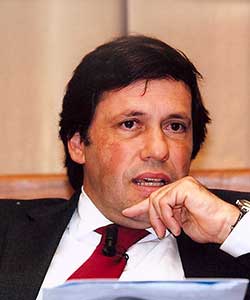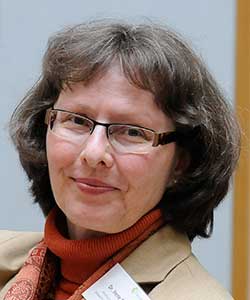Vic Adamovicz (University of Alberta, Canada)
|
 |
Title:
Policy mix concepts and applications: Reflections on the emergence, and potential future directions, of market based instruments for conservation within a policy mix framework
|
Teaser:
A significant focus of policy mix research has been the examination of how different instruments interact in attempting to achieve conservation goals. This research has highlighted the complexity and interdependence of conservation policy tools. However, recent findings suggest the future of policy mix should include the examination of the linkages between conservation policy and other market and non-market institutions, and the incorporation of richer behavioral models into policy design.
|
| |
|
|
David N. Barton, Irene Ring, Graciela M. Rusch (POLICYMIX)
|
 |
Title:
From panaceas to policy mixes – an overview of the POLICYMIX project.
|
Teaser:
The POLICYMIX project has focused on evaluating the role of economic instruments in biodiversity conservation and ecosystem service provision in 7 case studies in Europe and Latin America. POLICYMIX call to action has been to demonstrate how no single policy instrument is a panacea for biodiversity conservation, and in so doing help to avoid agenda capture in policy debates by special interests.
|
| |
|
|
Arild Vatn (Norwegian University of Life Sciences, Norway)
|
 |
Title:
From theory to practice: Institutional challenges for policy mix analyses in biodiversity and ecosystem governance
|
Teaser:
The presentation looks at the issue of policy mixes from the perspective of institutional theory/the theory of environmental governance. A set of questions for an institutionally oriented policy mix analysis will be defined. The value of this type of analyses will be illustrated by presenting a set of experiences from the more general literature and from own and policy mix case studies.
|
| |
|
|
David N. Barton, Eeva Primmer, Adriana Chacón-Cascante, Daniel Caixeta Andrade (POLICYMIX)
|
 |
Title:
PES – a policy mix within a policyscape
|
Teaser:
Voluntary forest conservation and PES can be seen as a mix of rules-in-use, interacting with a mix of policies across the landscape mosaic. Drawing on examples from Costa Rica, Finland and Norway we discuss implications for PES policy design and analysis.
|
| |
|
|
Rui Santos, Peter H. May, Nele Lienhoop (POLICYMIX)
|
 |
Title:
How can AEMs be more successful as instruments to promote biodiversity conservation?
|
Teaser:
Agro-environmental measures (AEM) are designed to encourage landholders to adopt more environmentally friendly practices, but they have not been always successful. We compare experience from the current and potential use of AEM in Portugal, Germany and Brazil, discuss their role in the wider conservation policy mix and present recommendations for policy design and implementation.
|
| |
|
|
Irene Ring, Peter H. May, Rui Santos (POLICYMIX)
|
 |
Title:
Aligning ecological fiscal transfers in national and state policy mixes
|
Teaser:
Ecological fiscal transfers (EFT) redistribute public tax revenue from central to state and local governmental levels based on conservation indicators. Building on case studies from Brazil, Portugal and Germany, we review EFT and their (potential) functional role in the wider conservation policy mix.
|
| |
|
|
Jaroslav Myšiak (Fondazione Eni Enrico Mattei, FEEM, Italy)
|
 |
Title:
Turning to market forces to accelerate the attainment of Europe’s water objectives
|
Teaser:
Despite numerous pledges, Europe is struggling to meet the ambitious water objectives set in the flagship of the EU environmental legislation, the Water Framework Directive (2000/60/EC). This speech summarises the results of a recently completed wide-reaching assessments of benefits, comparative strengths, downsides, and potential side effects of economic policy instruments (EPIs) in water resource management field.
|
| |
|
|
Felix Matthes (Öko-Institut, Germany)
|
 |
Title:
The mix of ambitious climate and energy policies
|
Teaser:
The interaction of policies and a well-designed and consistent policy mix is one of the key challenges for ambitious energy and climate policies in the real world. Specific challenges arise from a combination of policy instruments of quantity controls (such as emissions trading schemes) and complementary policies - and vice versa. Based on the empirical evidence from policies and political arenas around the world, the presentation draws key lessons and offers a methodological approach to form a consistent, comprehensive and non-arbitrary policy mix.
|
| |
|
|
Lucy Emerton (Environment Management Group, Sri Lanka)
|
 |
Title:
Changing policy mixes in practice: what does it take?
|
Teaser:
We review experiences and lessons learned from real-world cases of biodiversity and ecosystem planning and ask: is the promise of policymix approaches borne out in reality, and how can the findings of such analyses be applied to make a useful contribution towards the design of more practical, relevant and effective packages of conservation instruments?
|
| |
|
|
Marianne Kettunen (Institute for European Environmental Policy, IEEP, Belgium)
|
 |
Title:
How to ensure that green is truly green? Policy mixes for integrating nature in green economy.
|
Teaser:
There is an increasing appreciation that nature, including biodiversity and healthy ecosystems, underpins the functioning of economies and wellbeing of societies and individuals. Integrating the value of nature into policies and decision-making by using well-designed policy mixes for conservation and sustainable use of biodiversity is a key to ensuring a transition to a truly “green” green economy.
|
| |
|
|
Jan-Erik Petersen (European Environment Agency, EEA, Denmark)
|
 |
Title:
Accounting for natural capital in the policy mix
|
Teaser:
Natural capital accounting approaches are being developed in Europe and at global level. These help analysing the composition of our natural capital and which components may be most fragile. But strong effort is still required to understand which policies have the biggest impact on natural capital. Secondly, it is essential to identify key policy levers for managing our natural capital better.
|
| |
|
|
ROUNDTABLE
Chair: Lucy Emerton (Environment Management Group, Sri Lanka)
|
 |
Title:
Communicating and acting on policy mix research and analysis: What does it take to leverage effective, equitable and sustainable packages of instruments for environment and conservation in the real world?
|
Teaser:
The roundtable draws together and reflects on the deliberations and insights that have emerged during the course of the conference. The focus is on discussing the extent to which the considerable advances in research methodologies and information that have been generated over recent years have influenced the way in which environment and conservation policies are actually formulated and implemented in practice. The intention is to identify lessons learned and ways forward in better closing this knowledge-policy-practice loop in the future.
|
Participants:
- David N. Barton (Norwegian Institute for Nature Research, NINA, Norway)
- Marianne Kettunen (Institute for European Environmental Policy, IEEP, Denmark)
- Jussi Lankoski (Organisation for Economic Co-operation and Development, OECD, France)
- Peter H. May (Federal Rural University of Rio de Janeiro, UFRRJ, Brazil)
- Jan-Erik Petersen (European Environment Agency, EEA, Belgium)
- Ina Porras (International Institute for Environment and Development, IIED, UK)
- Ralf Döring (Thünen Institute of Sea Fisheries, TI, Germany)
|